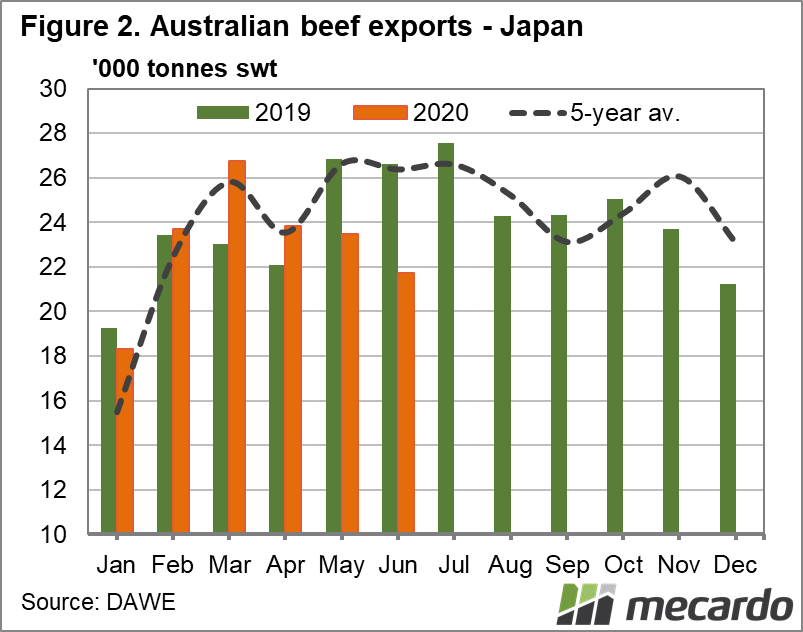COVID-19 is causing all sorts of fluctuations in beef markets, and June was no exception. The US took more of our beef than any month for the year to date and it seems it was taken from China. Export to Japan appears to be suffering from falling feedlot supplies, and the usual tight winter supply of finished steers.
Total beef exports were lower in June, but this was more of a function of lower slaughter than lower demand. East Coast cattle slaughter has been running around 18% lower than last year in May and June, so to have exports down 4% shows importing countries still have plenty of pull.
Exports to the US tend to lag supply shortfalls in the US, and it looks like the processor closures and tight beef supply from April and May was reflected in June export numbers. Figure 1 shows June beef exports to the US were up 27% on May and 31% on June 2019. In fact, exports to the US were at their second-highest level since 2016.
The strong rally in export prices to the US in May translated into much stronger exports. With US slaughter ramping up, and export prices easing, expect exports to the US to fall in July.
The extra 5,500t exported to the US seemed to come directly from the Chinese market. Beef exports to China were down 7,300t, or 30%, to their lowest level since January 2019.
Beef exports to Japan fell for the third straight month, and again, this appears to be a factor of supply rather than demand. With the number of cattle in feedlots at the end of March at a two year low, the amount of grainfed beef is down and exports to Japan are suffering.
The value of beef exports to Japan in May (the latest data) was higher, despite lower volumes than April (Figure 3). This suggests that demand for our beef in Japan hasn’t been impacted by COVID just yet.
What does it mean?
Beef export demand remained robust in June, with plenty of assistance from tight supply. For cattle prices, this has meant very strong values during the start of winter. With demand from the US weakening, there could be some pressure come on prices, with exporters having to shift more beef into China.
Have any questions or comments?
Key Points
- Beef exports were lower in June, on the back of reduced cattle supplies.
- Exports to the US market had a very strong June, as the lag from processor shutdowns hit supplies.
- Demand from the US will weaken from here, which could see some pressure on prices.
Click on graph to expand
Click on graph to expand
Click on graph to expand
Data sources: MLA, WTE, DAWE, Mecardo














